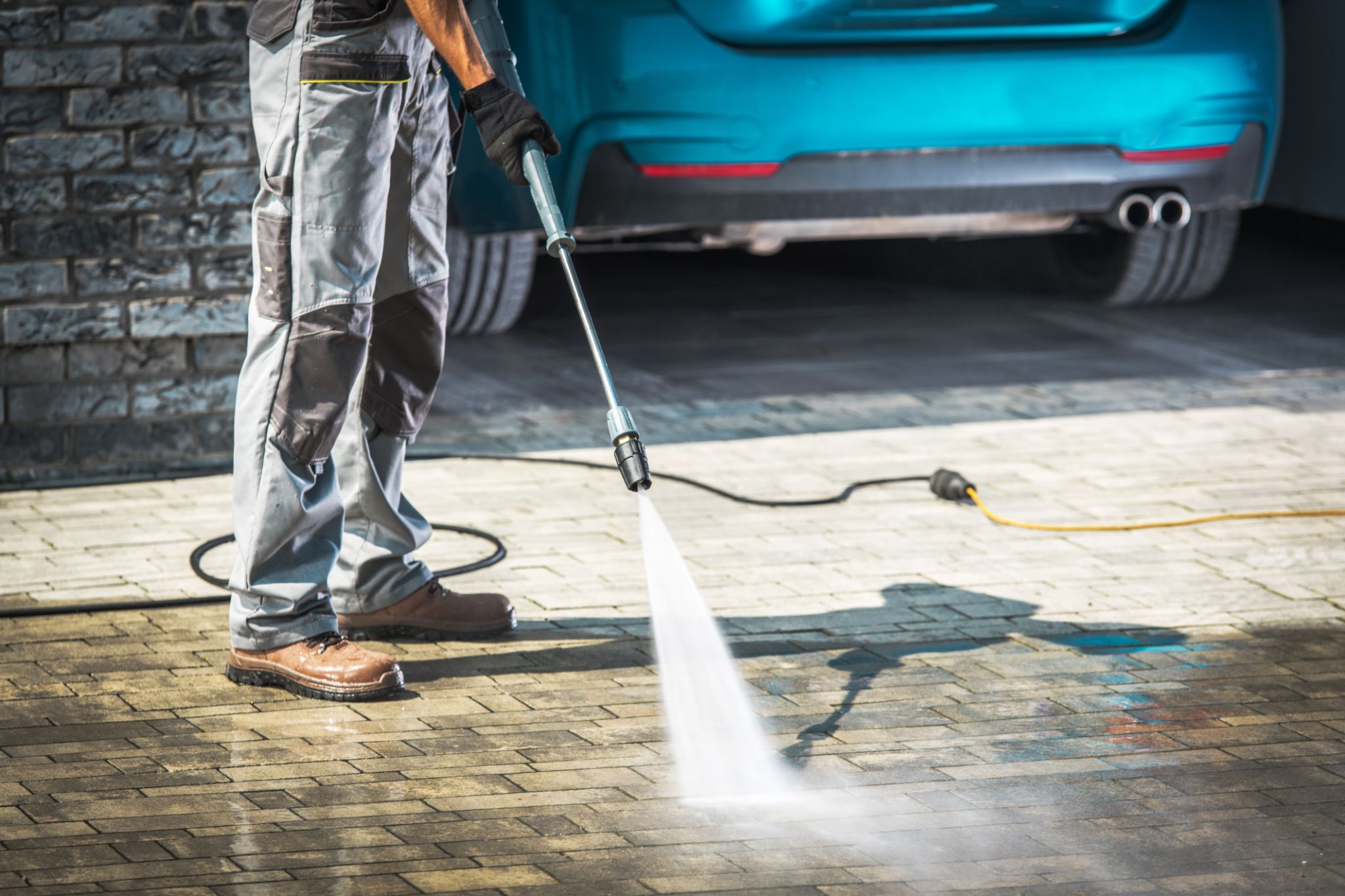The Ultimate Guide to Driveway and Sidewalk Power Washing
Understanding the Importance of Power Washing
Maintaining the exterior of your home can be a daunting task, but one crucial aspect that often gets overlooked is the cleanliness of driveways and sidewalks. Power washing, also known as pressure washing, is an effective way to remove dirt, grime, and stains, ensuring your property always looks its best. Not only does it enhance curb appeal, but it can also extend the lifespan of these surfaces by preventing the decay caused by mold and algae.

Benefits of Regular Power Washing
Regular power washing offers numerous benefits beyond aesthetics. It helps in maintaining the structural integrity of your concrete or paved surfaces. Over time, contaminants like oil, algae, and mold can cause surfaces to weaken and crack. By regularly removing these substances, you can avoid costly repairs. Moreover, power washing contributes to a healthier environment by eliminating allergens and pollutants that accumulate on outdoor surfaces.
Enhancing Safety
Slippery sidewalks and driveways can pose a significant safety risk, especially during wet weather. Mold and algae build-up is a common cause of slips and falls. Power washing effectively removes these hazards, making your walkways safer for family and guests.

Choosing the Right Equipment
When it comes to power washing, having the right equipment is crucial for achieving the best results. While renting a pressure washer is an option, investing in your own machine can be more economical if you plan to wash regularly. Look for a washer with at least 3000 PSI (pounds per square inch) for effective cleaning of stubborn stains.
Nozzles and Attachments
Nozzles play a critical role in determining the pressure and spray pattern of your washer. A 25-degree nozzle is generally suitable for most driveway and sidewalk cleaning tasks. You might also consider using a surface cleaner attachment, which can provide more consistent results while reducing cleaning time.

Step-by-Step Power Washing Guide
Before you begin power washing, it's essential to prepare the area by removing any debris or obstacles. Here’s a simple guide to get you started:
- Pre-treat Stains: Apply a degreaser or specialized detergent to any oil or stubborn stains.
- Set Up Equipment: Connect your pressure washer to a water source and select the appropriate nozzle.
- Test Spray: Before washing the entire surface, test the spray on a small area to ensure it won’t cause damage.
- Begin Washing: Start from the highest point of your driveway or sidewalk and work your way down, using even strokes.
- Rinse Thoroughly: Once complete, rinse the area with clean water to remove any remaining detergent.
Tips for Best Results
To ensure successful power washing, keep these tips in mind:
- Use Proper Technique: Maintain a consistent distance between the nozzle and the surface to prevent damage.
- Avoid Delicate Areas: Be cautious around edges and joints where high pressure could cause chipping.
- Protect Surroundings: Cover plants and nearby surfaces that could be damaged by water or detergent.

Hiring Professionals vs. DIY
If you're not comfortable handling a pressure washer, or if your driveway and sidewalks have extensive staining, hiring professional power washing services might be a wise choice. Professionals have the expertise and equipment to tackle even the toughest jobs efficiently. However, if you prefer a DIY approach, following these guidelines will help you achieve satisfactory results.
In conclusion, regular power washing is an essential aspect of home maintenance that offers aesthetic benefits as well as improved safety and longevity of your driveway and sidewalk surfaces. Whether you choose to tackle it yourself or hire professionals, keeping these areas clean will boost your property's value and appeal.
